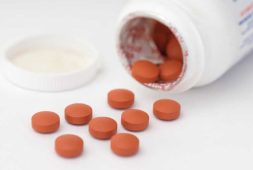
Dengue Fever comes from mosquitos and those who suffer from it don’t always know that they already have it. The patients need to go to a lab to get a blood test to see if they’ve been bitten by the dengue mosquito.
While dengue is perfectly curable, it continues to claim lives each year. Early detection here is key so that patients get the help they need immediately. And with the dawn of smartphones, app makers have been finding ways to make life easier.
What if there was an app that was reliable enough to test dengue? That would be extremely convenient and helpful. Nowadays, what’s most needed are accurate home testing kits that people could utilize to test for a wider range of illnesses. As for dengue, a new research shows that smartphone-powered tests are capable of testing for Dengue Fever.
A group of biomedical technology researchers from the University of Reading made use of a new diagnostic kit that they called Cygnus. This was designed to detect Dengue Fever with significantly better rates when compared to lateral flow testing kits.
The group had been working with academics and clinicians in Thailand. The entire team run a trial on the tests alongside already established alternatives. They discovered that the new tests showed 82 percent clinical sensitivity. They had won over the lateral flow testing that showed only 74 percent sensitivity. More importantly, they matched the hospital-based lab diagnostics with 83 percent sensitivity. Concurrently, these devices were designed to make 10 measurements. This allows the users to identify which one of the four different dengue virus types was behind the infection.
Dr. Sarah Needs, Postdoctoral Research Associate in Microfluidic Antimicrobial Resistance Testing from the University of Reading was the paper’s lead author. She had shared, “The paper shows exciting potential for the use of the microfluidic ‘lab on a strip’ tests that can used in conjunction with a smartphone and are more powerful than LFT testing in this case. As well as being cheap to produce, the lab on a strip technology allows users to test many different targets at once in one single sample, so it could be useful to detect multiple diseases not just one.”
Lab Available on a Strip
The newest diagnostic test that was made for the research makes use of the ‘lab on a strip’ technology. This is capable to performing 10 or more tests with a very small amount of liquid sample such as the person’s blood, urine, or saliva.
The tests that were made for this research were specially developed to detect Dengue Fever. This is rather crucial because the disease affects an estimated 400 million cases per year. It’s true that most of the cases that happen are mild, but dengue infections can develop into further complications, which can be fatal as well. In fact, Dengue can be the most severe in the younger population. It’s also a very consequential health challenge that the world has dealt with.
Dr. Alexander Edwards, Associate Professor in Biomedical Technology at the University of Reading was the co-creator of the lab on a strip technology. She elaborated, “While some people might only recently learned of the trade-offs between home vs lab testing following Covid-19, in many parts of the world rapid lateral flow tests are used for a range of illnesses including dengue.”
She added, “With the Cygnus concept, we are tackling the biggest hurdle for home testing. How do you make something portable that can be cheaply mass produced while still matching laboratory test performance? By designing the microfluidic lab on a strip using mass-production melt-extrusion it is possible to scale up production and produce hundreds of thousands of tests. By recording results with smartphones, which are becoming ubiquitous, we have designed something that could be revolutionary for healthcare.”
It is with hope that this type of technology can soon be perfected and be made available to the public. This way, people who are exposed to the dengue mosquitos, can get the additional help that they so badly need and deserve.
The paper has already been published in PLOS Neglected Tropical Diseases.



